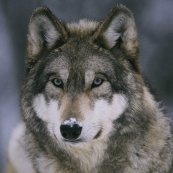In regards to the question of why would sasquatch need to develop cloaking or effective camouflage or invisibilty, when it is the apex predator of its environment? It's because adaptation is always a step behind the the causative factors. Sasquatch weren't always the alpha predator in North america. Figuring they came over the Bering straight land bridge in time to get swept up in the "megafication" of the North American megafauna, and thus became Pleistocene mega-hominids, they were still dealing with a large variety of megapredators more specialized for predation than they were. And while their heightened cognition probably lent itself well to cooperative hunting/foraging as well as cooperative defence, individually they were still pretty vulnerable to predation. That and I'm sure they didn't start off with as refined cooperative behaviors as they ended that era with. In light of that, it's pretty easy to see how the camouflage/concealment abilities would arise, perhaps even sentiently directed or guided, as we must keep in mind these are not mere apes nor displaced giganthopithicus looking for a bamboo substitute, these were increasing larger hominids capable of strategy, contextual analysis, and a growing awareness of just what groups of such creatures might be capable of(which could well prove quite the advantage, especially as the climate began to shift and things began getting desperate for the more specialized predators as the shifting plant communities killed off much of their prey)
So the abilities for concealment and camouflage could well be adaptations to conditions no longer quite so pressing, yet they still prove useful, and so therefore are retained.



